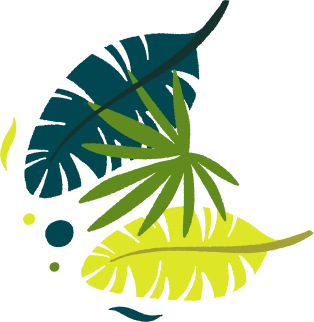


Soaring limestone peaks and emerald rivers dominate the landscape as I ride out of Phong Nha-Ke Bang National Park. Vietnam’s karst scenery here is some of the country’s most sublime. Today we’re headed south on a roughly 340 km journey toward Hoi An.
By car this would take about 6 hours, so on a bike it’s best split into 2-3 days with stops. We leave Quảng Bình province via quiet paved roads; after Dong Ha and Hue the highway (QL1A) hugs the coast into Da Nang.
The ride is mostly on good pavement, though be alert for heavy trucks and rain-slick corners.
Paradise Cave in Phong Nha
Phong Nha & Caves: If you haven’t already, explore the famous caves here. Paradise Cave (Thiên Đường) is a must-see: entry ~250,000 VND (open ~8 AM-4 PM). Phong Nha Cave itself is 150k plus a boat fee. These early stops can add a half-day before you depart.
Vinh Moc Tunnels in Quang Tri
Vinh Moc Tunnels (Quang Tri): Riding south you enter the old DMZ region. A key detour is the Vinh Moc tunnels - a 300m-long underground refuge from the war. Today it costs just ~40,000 VND to explore. The narrow brick passages and dim light (bring a flashlight) make it an eerie, educational stop. Plan 1-2 hours here.
Hue City Citadel
Hue City: Continuing, you’ll reach Huế - the ancient capital of the Nguyễn emperors. The Imperial Citadel and Forbidden Purple City are highlights (entrance about 150,000 VND). Allow a couple of hours in the morning or late afternoon to tour the royal tombs, pagodas, and the 7km-long Citadel walls. Huế’s cuisine is famous - try bún bò Huế (spicy beef noodle soup) in a market stall or riverside cafe. Overnighting in Huế is popular; there’s everything from budget hostels to mid-range hotels.
Hai Van Pass
Hai Van Pass & Coast: South of Huế, you’ll hit the Hai Van Pass, a 20-30 km stretch of winding cliffside road. The views of the East Sea are legendary. Stop at one of the roadside cafes (there are dozens) to sip coffee and take in the panorama.
After crests, the highway plunges to Lăng Cô Bay, a golden-sand crescent below misty hills. This Top-Gear-famous vista is stunning at sunset. If time allows, take the backroad along the Lập An Lagoon: a quieter route with optional detours to small waterfalls like Thác Đỏ or Suối Mơ.
View of Pagoda on the Danang Marble Mountains
Da Nang & Marble Mountains: Descending from the pass, you enter Da Nang. A worthwhile stop is the Marble Mountains (Ngũ Hành Sơn). A ticket is ~40,000 VND, which grants entry to the cluster of marble hillocks with Buddhist shrines and caves. You can climb 100+ steps or pay ~15,000 VND to ride the elevator up for a view. Don’t miss Am Phủ (Hades) Cave at the base for a spooky shrine (40k entry). Elsewhere in Da Nang, the Son Tra peninsula has the giant Lady Buddha pagoda (free) and nice sea views.
Elephant Springs Suối Voi
Elephant Springs (Suối Voi): En route between Da Nang and Hoi An (just off the highway near Phú Lộc), Elephant Springs is a hidden gem. It’s a cool forest stream and waterfalls where you can swim. Entrance is very cheap (around 10,000 VND). There are swings and bamboo huts to relax in. It’s perfect for a midday break in warm weather - locals warn it can be crowded on weekends, but mid-week it’s peaceful.
Hoi An Ancient Town: Finally, about 30 km from Da Nang you’ll roll into Hoi An. This riverfront town is famed for its lantern-lit old quarter. Note that foreigners must buy an entry ticket (~120,000 VND) to walk the main streets and enter temples. That ticket covers admission to 5 sites (like the Japanese Covered Bridge). Exploring the Old Town by bike (parked at the gate) or on foot is magical at dusk.
By evening I pull into Hoi An’s Old Town. Sunlight glints on the yellow facades and lanterns swing in doorways. In one last note of adventure: don’t miss Hoi An specialties like cao lầu noodles and bánh mì Phượng in the nearby market!
Pack for Weather: Central Vietnam can be hot and humid April-August. Pack light, quick-dry layers, and sunscreen. A good rain jacket and rain pants are essential - sudden downpours are common even in the dry season. Use a rain cover on your pack.
License & Legal: By law, any bike over 50cc requires a valid motorcycle license (for foreigners an International Driving Permit recognized in Vietnam). In practice many travelers ride scooters (110-150cc) on a whim, but consider the IDP for safety. Always wear a sturdy helmet - it’s legally required and will save your skull on a slip or fall. Never drink and ride; Vietnam enforces drunk-driving strictly.
Road & Fuel: National highways in this region are generally well-maintained. Watch out for potholes or broken pavement after rain. Drive defensively - keep an eye out for animals (buffalo, dogs) and trucks taking bends. Start each day with a full fuel tank: fuel stations are frequent in towns (Dong Hoi, Dong Ha, Hue, Danang, etc.), roughly every 30-50 km. Fuel costs about $0.70-0.80 per liter (19-20k VND). Carry a bit of cash for rural pumps, as not all take cards.
Navigation: Vietnamese road signs in rural areas can be sparse. Download an offline map (Maps.me or Google offline) and consider a local SIM card for data. Vietnamese drivers use the horn liberally, so pay attention at merges. Daytime riding is safest; avoid night riding on winding roads.
Money & Phones: Bring enough cash (VND) for entrance fees and meals - ATMs are common in big towns but scarce in villages. Most small vendors won’t take cards. Charge your phone each evening; consider a power bank if camping or staying remote.
Safety Gear: In addition to a helmet, I carry sunglasses, a bandana (to keep dust out), and good hiking-style shoes (flip-flops are dangerous on a bike). A reflective vest or light at dawn/dusk is wise.
La Da S House in Da Nang
Accommodations: Hue and Da Nang are natural overnight stops with lots of hotels/hostels. In Hue you can also rent bikes or do a short cruise on Perfume River. Homestays near Lang Co or DMZ (A Lưới) offer an authentic feel if you detour. In Hoi An, book ahead in peak season (cheap guesthouses from ~$10, midrange hotels ~$30+ per night).
Health: Carry water and stay hydrated. A basic first-aid kit is smart (bandages, antiseptic) for any scrapes. Insect repellent will help in jungle areas.
Scooter Rental: ~120,000-150,000 VND/day for a decent automatic scooter (about $5-7 USD). Fill-up costs just a few dollars for this leg.
Fuel: Expect around 5-7 USD total to cover Phong Nha-Hoi An on a 110-150cc bike.
Tolls: National roads are mostly free. You will pay occasional parking fees (~5k VND) or small tolls for tunnels (e.g. Phước Tượng Tunnel, ~18k VND, if you use Highway 1).
Entrance Fees: Paradise Cave 250k; Vinh Mốc tunnels 40k; Hue Citadel 150k; Marble Mtn 40k; Elephant Springs 10k; Hoi An Old Town 120k. Costs change, so carry extra cash.
Food: Street food bowls and noodles: ~30-50k VND. Sit-down meal in a midrange restaurant: 100-200k VND per person. Bottled water ~10-15k.
Accommodation: Dorm beds from ~$5-7, guesthouses ~$10-20, 3-star hotels $20-40+ per night, more for high-end.
Hoi an Street at Night
Q: How long and far is the ride? About 338-340 km (210 miles) from Phong Nha to Hoi An. It’s roughly a 6-hour drive non-stop, but on a bike plan 2-3 days to ride safely and see sights.
Q: What is the best route? The classic route is south on QL1A through Đồng Hới, Đồng Hới to Huế, then over the Hải Vân Pass into Da Nang, and down the coast to Hoi An. This is scenic and straightforward. An alternative is to swing west into the Truong Son (Ho Chi Minh) Trail and cross at Khe Sanh or A Lưới before reaching Huế - this is more remote and adds km, but it’s an adventurous detour.
Q: Are the roads safe? Generally yes, the highways are paved and maintained. However, watch for potholes after rain, unpredictable rural traffic (bikes, pedestrians, animals), and slow trucks on passes. Always wear a helmet (required by law) and drive defensively. Daylight riding is strongly advised - avoid the winding mountain roads in the dark.
Q: What documents do I need? Vietnamese law mandates a motorcycle license for bikes over 50cc. Foreigners are supposed to carry an International Driving Permit. In practice, many travelers skip this, but lack of license can cause legal trouble if you have an accident. Also carry your passport copy or IDP.
Q: When should I travel? The best months are February to August when it’s generally dry and warm. From late September to November central Vietnam gets heavy rains and even typhoons, which can flood roads and close passes. (Phong Nha’s wet season is October-December.) Check weather forecasts before you leave.
Q: Where to stop overnight? Good overnight cities are Huế (midpoint) and Da Nang. Both have ample hotels/hostels. You could also overnight in Hoi An if you ride through in one day, but that’s a very long day by bike. If you take the DMZ route, Khe Sanh has simple lodgings.
Q: What about fuel and restrooms? Gas stations are plentiful in towns along QL1 (look for a red, yellow, green pump with the Petrolimex logo). It’s wise to refuel in larger towns (e.g. Đồng Hới, Đồng Hới, Quảng Trị, Huế, Da Nang) before stretches of coast. Restrooms can be found at gas stations, cafes, or rest stops. Always carry some small bills - many toilets charge ~2-5k VND.
Q: What should I pack for the ride? Besides standard luggage, pack rain gear (jackets and pant shells), layers for cool mornings, and sunglasses. Bring a refillable water bottle. Since phone signal can drop, have a paper map or offline GPS. A power bank and multi-tool (for minor bike issues) are helpful. Don’t forget a camera - this ride is photogenic!
Q: Are there hidden gems along the way? Absolutely. We loved Elephant Springs (Suối Voi) for its jungle swim (entrance ~10k) and the little backroads around Lăng Cô Bay with local seafood shacks (fresh oysters on the grill!). If you have extra time, A Lưới’s waterfalls or Bach Ma National Park (north of Huế) are off-the-beaten-path detours.
Get the latest information about our tours and special offers!